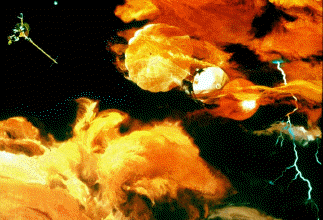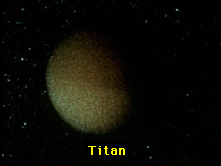This simple cartoon shows general similarities and differences between eukaryote and prokaryote cells.
Image courtesy of Windows to the Universe
Organelles of Eukaryotic Cells
Below is a list of organelles that are commonly found in eukaryotic cells.
| Organelle |
Function |
| Nucleus |
The “brains” of the cell, the nucleus directs cell activities
and contains genetic material called chromosomes made of DNA. |
| Mitochondria |
Make energy out of food |
| Ribosomes |
Make protein |
| Golgi Apparatus |
Make, process and package proteins |
| Lysosome |
Contains digestive enzymes to help break food down |
| Endoplasmic Reticulum |
Called the "intracellular highway" because it is for transporting
all sorts of items around the cell. |
| Vacuole |
Used for storage, vacuoles usually contain water or food. (Are you are
thirsty? Perhaps your vacuoles need some water!) |
| Plant cells also have: |
| Chloroplasts |
Use sunlight to create food by photosynthesis |
| Cell Wall |
For support |
Last modified April 13, 2004 by Lisa Gardiner.
You might also be interested in:

Photosynthesis is the name of the process by which autotrophs (self-feeders) convert water, carbon dioxide, and solar energy into sugars and oxygen. It is a complex chemical process by which plants and
...more
Do you look a bit like your brothers and sisters? Do you look a bit like your parents? The similarities are because, unless you were adopted, you and the other members of your family have genetic material
...more
Jupiter's atmospheric environment is one of strong gravity, high pressure, strong winds, from 225 miles per hour to 1000 miles per hour, and cold temperatures of -270 degrees to +32 degrees (freezing temperature).
...more
In July, 1996, it was announced that Dr. David McKay, along with a team of scientists at Johnson Space Center (a division of NASA), had discovered possible fossils of bacteria in a meteorite named ALH84
...more
Saturn's atmospheric environment is one of strong gravity, high pressure, strong winds, from 225 miles per hour to 1000 miles per hour, and cold temperatures of -270 degrees to +80 degrees. With winds
...more
Titan's atmosphere is a lot like the Earth's, except that it is very cold, from -330 degrees to -290 degrees! Like the Earth, there is a lot of Nitrogen and other complex molecules. There also may be an
...more
Autotrophs are organisms that can "make their own food" from an inorganic source of carbon (carbon dioxide) given a source of energy. Most autotrophs use sunlight in the process of photosynthesis to make
...more















